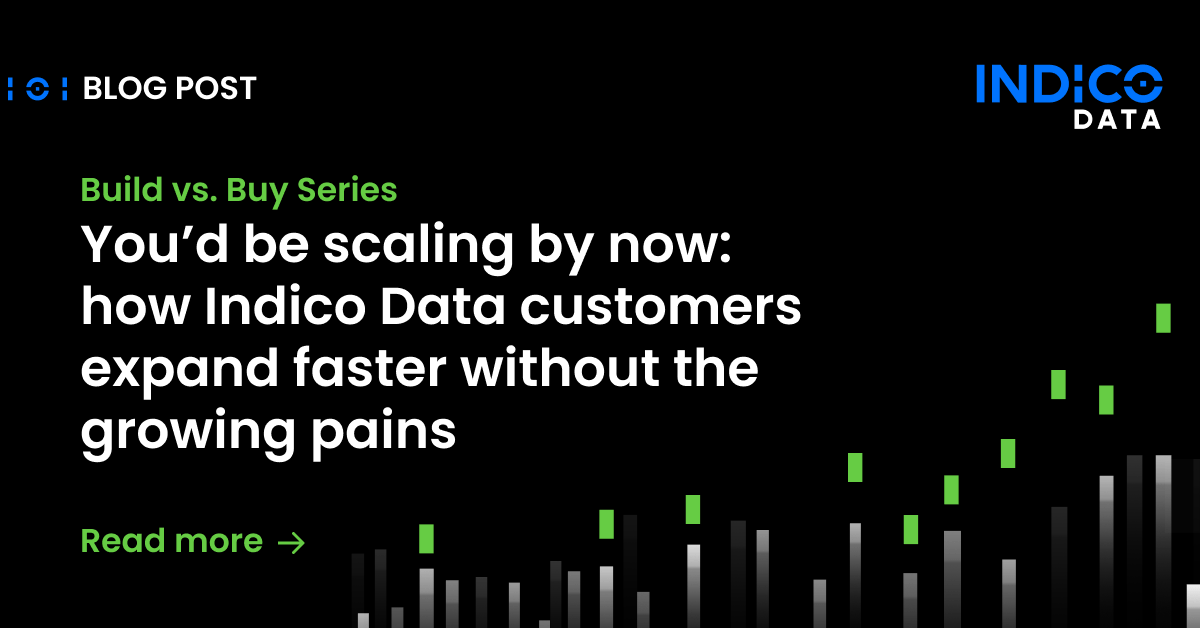Being able to process claims quickly and accurately isn’t just a goal—it’s a necessity in today’s insurance industry. Customers depend on timely resolutions, and companies rely on the efficient claims handling to maintain profitability and customer trust. However, many insurers are still bogged down by manual, outdated processes that eat up time and resources. Enter Intelligent Document Processing (IDP), a technology that’s reshaping the way insurers manage claims. By automating the handling of unstructured data, IDP is helping companies cut costs, reduce errors, and streamline operations.
Related content: Transforming insurance with data: how telematics and AI are shaping the future
Reducing operational costs with IDP
Traditional claims processing is often plagued by inefficiencies, manual errors, and high labor costs. Manual data entry and document review are not only time-consuming but also prone to mistakes, which can lead to costly rework and delays. Intelligent Document Processing addresses these issues by automating the extraction, classification, and processing of data from various documents such as claims submissions, policy documents, and customer correspondence.
One of the primary ways IDP reduces operational costs is by minimizing the need for manual intervention. By automating the capture and categorization of data, insurance companies can significantly reduce the amount of time their employees spend on routine tasks. This allows staff to focus on more value-added activities, such as customer service and decision-making, rather than on manual data entry. Moreover, IDP systems can handle large volumes of documents with speed and accuracy, reducing the risk of errors and ensuring that claims are processed more quickly and efficiently.
For instance, IDP can automate the initial intake process, ensuring that all required information is captured accurately and consistently from the outset. This not only speeds up the claims process but also reduces the likelihood of errors that could result in additional costs down the line. Furthermore, IDP systems are capable of learning and improving over time, meaning that the more they are used, the more efficient and accurate they become.
Case studies: the ROI of Intelligent Document Processing implementation
Intelligent Document Processing has delivered impressive returns on investment (ROI) across various sectors, including the insurance industry. The following case studies highlight the substantial cost savings and efficiency gains that companies have achieved through the adoption of Indico’s IDP solutions.
1. Cushman & Wakefield:
Global commercial real estate firm Cushman & Wakefield sought to enhance its deal management process by automating the intake and processing of complex documents. By implementing Indico Data’s Intelligent Intake IDP solution, the company was able to save 16,000 hours of employee time, which had previously been spent on manually reading and extracting data from documents. This automation led to a 70% faster turnaround time on deals, significantly improving operational efficiency and reducing costs associated with manual processing.
Cushman & Wakefield’s success demonstrates the power of IDP in transforming document-intensive processes. The company’s VP of Transformation, Brandi Corbello, emphasized the flexibility and ease of use of Indico’s solution, which allowed process experts to build and modify models without the need for IT or data scientists. This capability not only reduced reliance on technical teams but also empowered business users to take control of their processes, leading to greater agility and cost savings.
2. A Top-Ten US Bank:
Another compelling example comes from a top-ten US bank, which faced challenges with traditional RPA and OCR solutions, particularly in dealing with unstructured data. The bank partnered with Indico Data to deploy its IDP technology, which enabled the bank to reduce processing time by 85%. The bank initially needed to validate over 2.5 million accounts, a task that would have been daunting and costly using traditional methods. With IDP, the bank was able to streamline the process, narrowing down the number of affected accounts from 2.5 million to 500k, thereby saving substantial resources.
The bank’s successful deployment of IDP not only led to significant time and cost savings but also improved compliance with government regulations. By automating the analysis and verification of signature cards, the bank avoided potential fines and reduced the operational burden on its staff. The ongoing collaboration between the bank and Indico Data illustrates how IDP can deliver long-term value and drive enterprise-wide efficiencies.
3. Cognizant’s Client in Real Estate Data:
Cognizant, an IT services company, used Indico Data’s Intelligent Intake solution to address a challenging data intake problem for a large real estate data provider. The provider needed to process unstructured mortgage title and deed documents from over 3,300 counties across the US, each with its own unique format. By implementing IDP, the client achieved a 40% reduction in processing costs while improving the accuracy and speed of data extraction.
The complexity of the task, involving millions of documents with varying formats, made traditional automation tools inadequate. However, Indico’s solution, which allows non-technical users to build and refine models, proved to be a game-changer. By focusing on field-level accuracy rather than document-level automation, Cognizant’s client was able to enhance productivity and reduce the need for manual data entry, leading to substantial cost savings.
Related content: How intelligent document processing (IDP) transforms claims management
The long-term impact of IDP on the insurance industry
The benefits of IDP extend far beyond immediate cost savings and efficiency gains. As IDP systems continue to learn and adapt, they open up new possibilities for innovation and growth within the insurance industry. For instance, the ability to quickly and accurately process vast amounts of unstructured data can lead to better decision-making, more personalized insurance products, and improved customer satisfaction—all of which can lead to company growth and higher quality clients over time.
Moreover, as regulatory requirements become increasingly stringent, the need for accurate, compliant document processing will only grow. By investing in IDP now, insurance companies can future-proof their operations and ensure they remain competitive in a rapidly changing landscape.
Unlocking the future of claims processing with Intelligent Document Processing
Intelligent Document Processing offers insurance companies a powerful tool to reduce operational costs and enhance efficiency in claims processing. By automating the extraction, classification, and analysis of data from unstructured documents, IDP not only speeds up the claims process but also minimizes errors and reduces the need for manual intervention. The ROI examples from companies like Cushman & Wakefield, a top-ten US bank, and Cognizant’s client in real estate data demonstrate the significant cost savings and operational efficiencies that can be achieved through the adoption of IDP.
Companies that embrace IDP at this point in the insurance industry’s development will be better positioned to meet the demands of modern customers, comply with increasingly complex regulations, and maintain a competitive edge in the market moving forward. Indico Data’s Intelligent Intake solution has proven to be a valuable asset for companies looking to unlock the full potential of their unstructured data and drive meaningful business outcomes.
Subscribe to our LinkedIn newsletter.
Frequently asked questions
- How does Intelligent Document Processing (IDP) handle different formats and types of unstructured data? IDP systems are designed to work with a wide variety of unstructured data formats, including text documents, images, and PDFs, which may have different layouts and structures. Advanced IDP solutions use machine learning models and natural language processing (NLP) to extract, classify, and analyze data from these diverse sources. The models can be trained on specific types of documents, allowing the system to understand and process different formats accurately. Over time, as the system is exposed to more data, it continues to improve in handling new or unique document types.
- What are the initial steps for implementing IDP in an insurance company, and how long does it take to see results? The implementation of IDP in an insurance company typically begins with an assessment and planning phase, where the company identifies the types of documents that will be processed and maps out the current workflows to pinpoint areas where automation would be most beneficial. The next step involves training and customizing the IDP system to recognize and process specific document types and formats that the company uses. This is followed by integrating the IDP solution with the company’s existing IT systems, such as claims management and customer relationship management (CRM) platforms. The final step before full deployment is testing and validation through pilot projects to ensure the system works accurately and efficiently. Depending on the complexity of the documents and the scale of the operation, companies often begin to see improvements in processing speed and accuracy within a few weeks to a few months after implementation.
- How does IDP ensure compliance with regulatory requirements, especially in highly regulated industries like insurance? IDP systems can be configured to ensure that document processing aligns with industry-specific regulatory requirements. This is achieved by embedding compliance rules and checks directly into the processing workflow, allowing the system to automatically flag incomplete or non-compliant documents for manual review. In addition to this, IDP can automate the documentation and reporting processes needed for regulatory compliance, such as maintaining audit trails and generating compliance reports. This reduces the risk of regulatory breaches and helps companies keep pace with evolving regulatory requirements by allowing the system’s compliance rules to be updated as needed.


